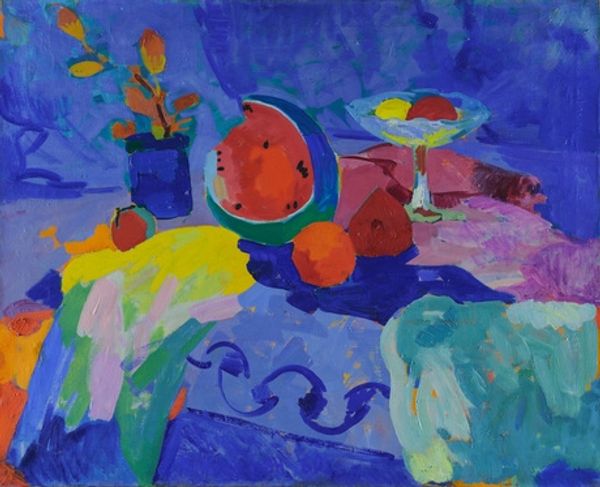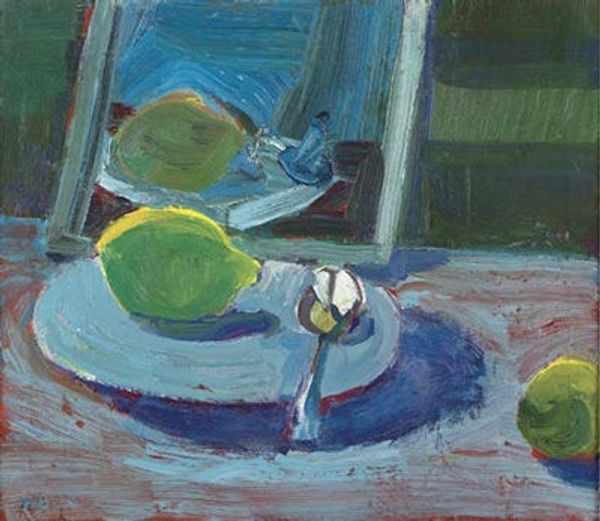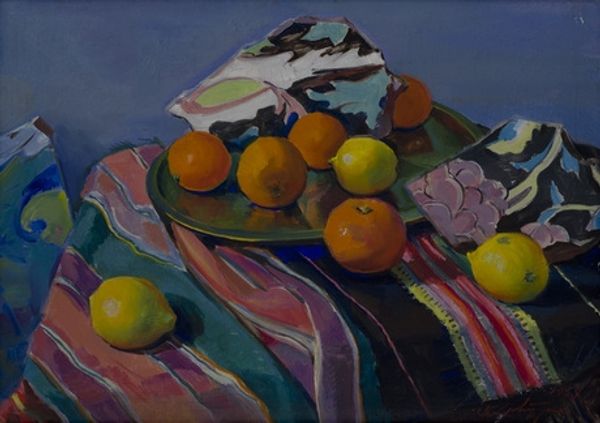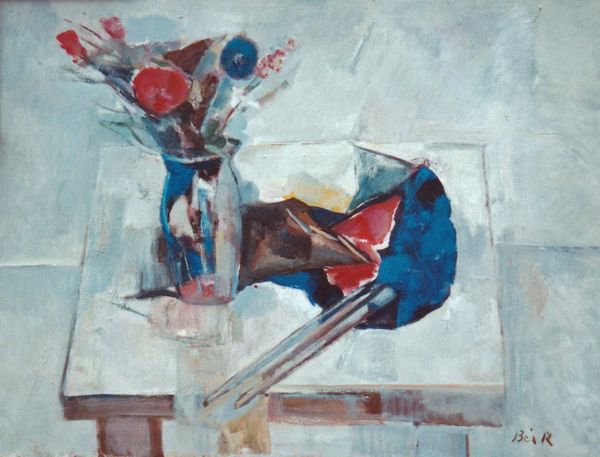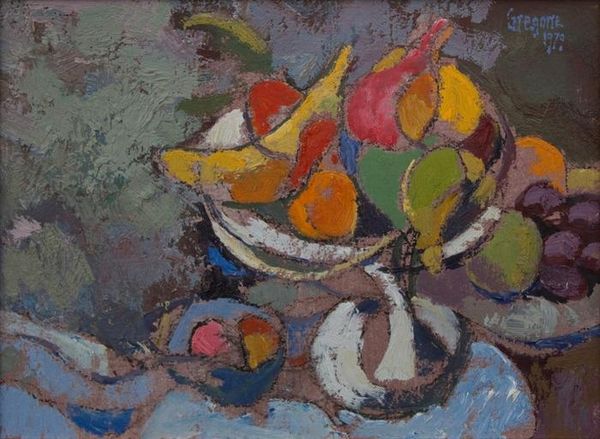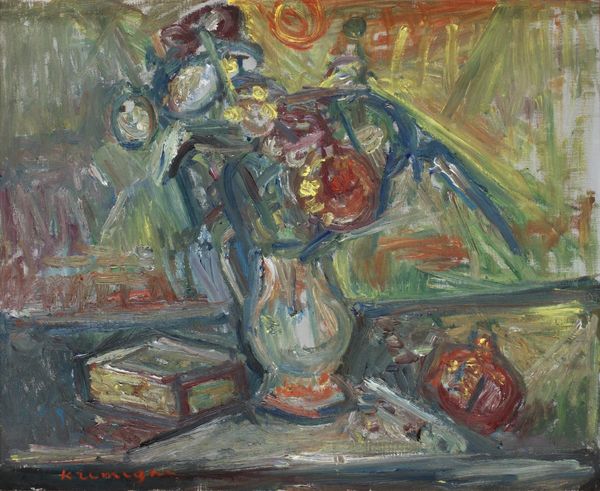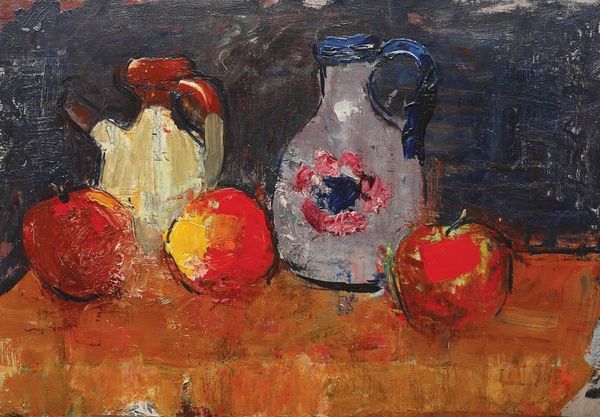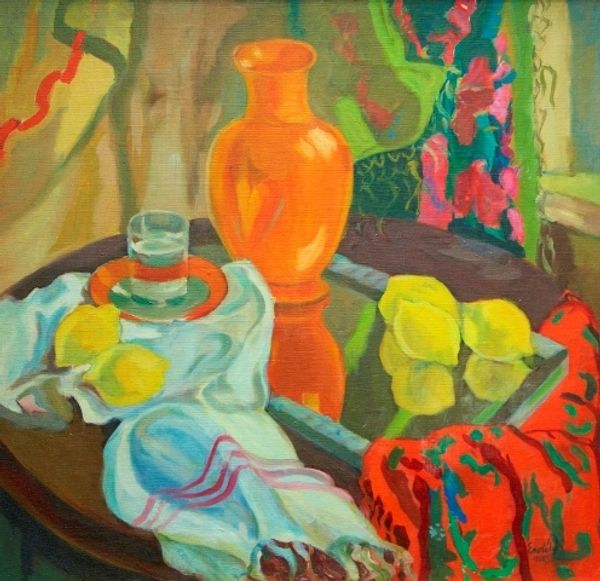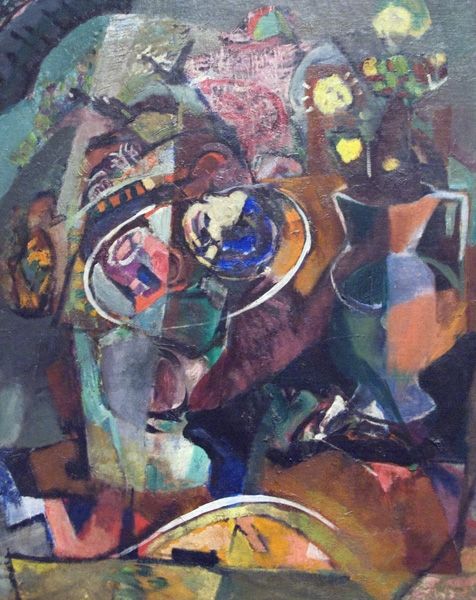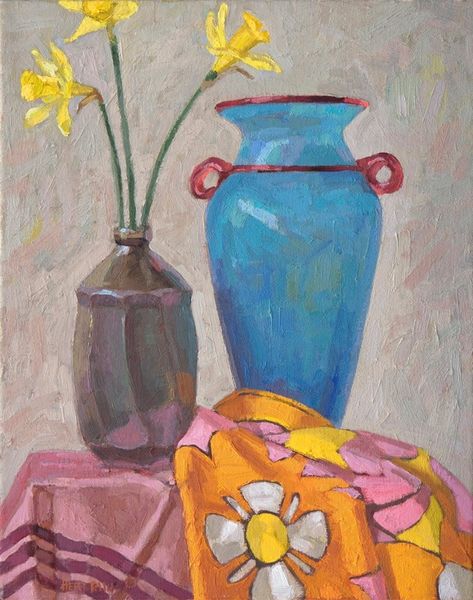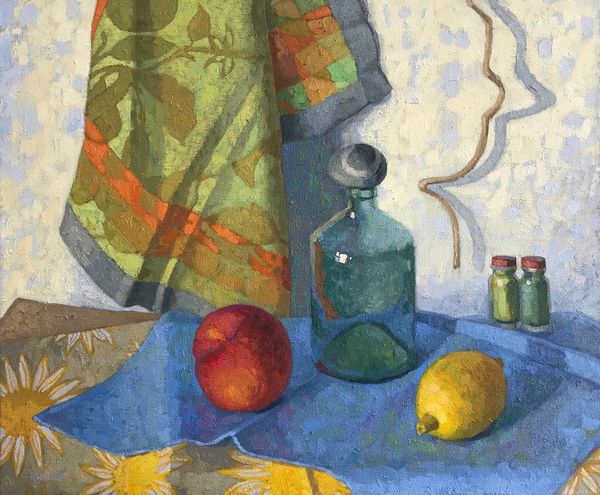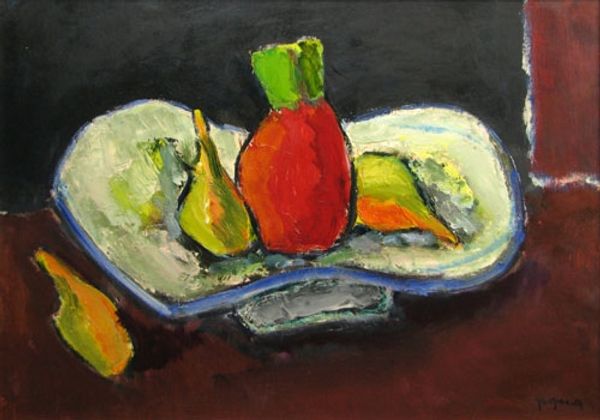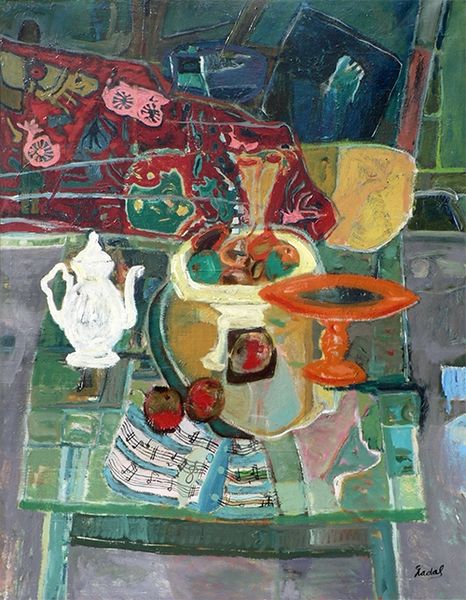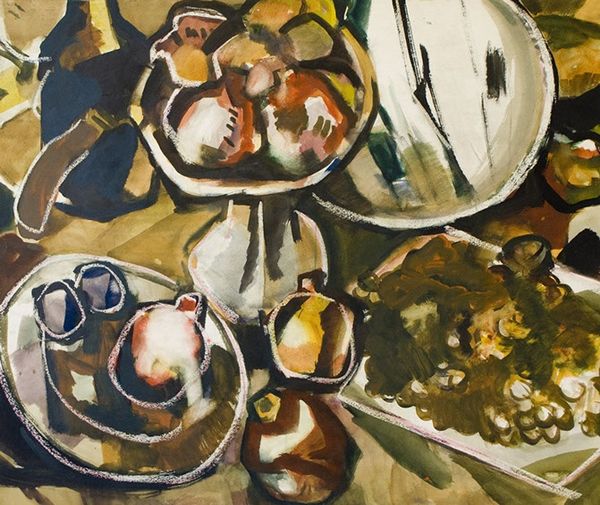
painting, oil-paint
#
painting
#
oil-paint
#
expressionism
#
naive art
#
painting art
#
modernism
Dimensions: 62 x 81 cm
Copyright: Public domain US
Editor: We are looking at "Light gamma," an oil painting by Martiros Sarian from 1913. There's a lovely arrangement of objects, but the color palette seems almost…discordant? How do you interpret this work? Curator: Let's examine the formal qualities first. Observe the tension created by the simultaneous use of complementary colors. The intense blues of the vase and jar against the oranges and reds of the fruit create a vibrating effect, denying a sense of visual harmony. The artist flattens the space, and it moves our view up, against what feels like an impossible vantage point. What do you make of the surface and the brushstrokes themselves? Editor: They seem intentionally crude, maybe? Like Sarian wasn't trying to hide the fact that it's a painting. Curator: Precisely. This emphasizes the materiality of the artwork, reminding us it is not a window onto reality, but an object in itself. This foregrounding of the medium is further emphasized by the simplified forms and almost naive representation. Editor: I see, so he is playing with contrasting formal elements to call attention to the artwork's artifice. That gives it a very different feel from traditional still life. Curator: Exactly! It moves the still life from documentation to construction. Editor: So it's less about what the objects are and more about how they are presented and how that construction prompts a response? Thanks for unpacking that for me, I'll be sure to notice Sarian's interplay between the flat picture plane and implied space. Curator: And consider how these techniques contribute to the work's expressive power, its 'light gamma', it shifts away from pure representation and pushes into subjective experience.
Comments
No comments
Be the first to comment and join the conversation on the ultimate creative platform.
